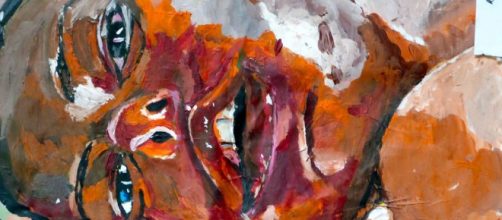With the latest news from Prince Charles, one might think he was trying to redeem himself in the eyes of those who wonder what he does all day. That is, besides painting banal landscapes that commercial galleries gobble up because, hey, he’s a royal.
It looks like he’s gotten off his pedestal of privilege to give other painters a chance as well as exhibit space in the Queen’s Gallery in Buckingham Palace no less. (More about that in a moment).
Shades of the Renaissance in Florence
Commissioning art makes the prince a kind of 21st century Lorenzo Medici who during the Renaissance collected paintings for the Medici Palace in Florence.
Even if Charlie is not going to give the world a Michelangelo, his cause is just.
The commissions have gone to several British artists to paint Holocaust survivors’ portraits. It’s Charles’ way of paying homage to the aging population of concentration camp survivors.
As he explained to the BBC, “As the number of Holocaust survivors sadly but inevitably declines, my abiding hope is that this special collection will act as a further guiding light.”
Serving the Queen
This isn’t Charles’ first rodeo when it comes to Holocaust commemoration. He’s been a “Patron of the Holocaust Memorial Day” since 2015.” That’s the year he took over the duty from Queen Elizabeth II.
Sounds good. But wait, are portraits really a good idea?
Reportedly, most of the survivors, who were children in the camps, are in their ‘90s. Who in their dotage wants their portraits painted?
Another question: Are all the artists chosen for the commission good choices? I’m thinking of Ishbel Myerscough. Her self-portrait at age 50 – baggy-eyed, droopy-lipped with sagging breasts – is a concern. How will she describe a woman in her ‘90s?
In your face portrait painting
Then there’s Charles's other choice, Jenny Saville. While you want a serious painter, her level of seriousness is unflinching and downright ungentle. I’m remembering art critic Donald Kuspit’s review of her work in Art Forum.
Pointing to Saville’s exhibit “The Mothers” at the Gagosian Gallery, Kuspit called one face of maternity “by no means loving – it even seems angry, or at least irritated and troubled.” That “troubled” look describes many of her works.
Maybe a better idea than a series of portraits is a series of concerts. One of the survivors, 96-year-old Anita Lasker-Wallfisch’s family played in the orchestra at Auschwitz, and subsequently in the Bergen-Belsen camp. Wouldn’t a concert dedicated to the survivors be more meaningful?
About that choice to exhibit the portraits in the Queen’s Gallery in Buckingham Palace. Why display paintings of concentration camp survivors in the glittering halls of the royal highnesses? Wouldn’t a public space be more accessible to the public?
The exhibit will also travel to Edinburgh, but again to a palace, the Palace of Holyroodhouse. Are such symbols of advantage in government appropriate for portraits of people who suffered such disadvantage in government?


